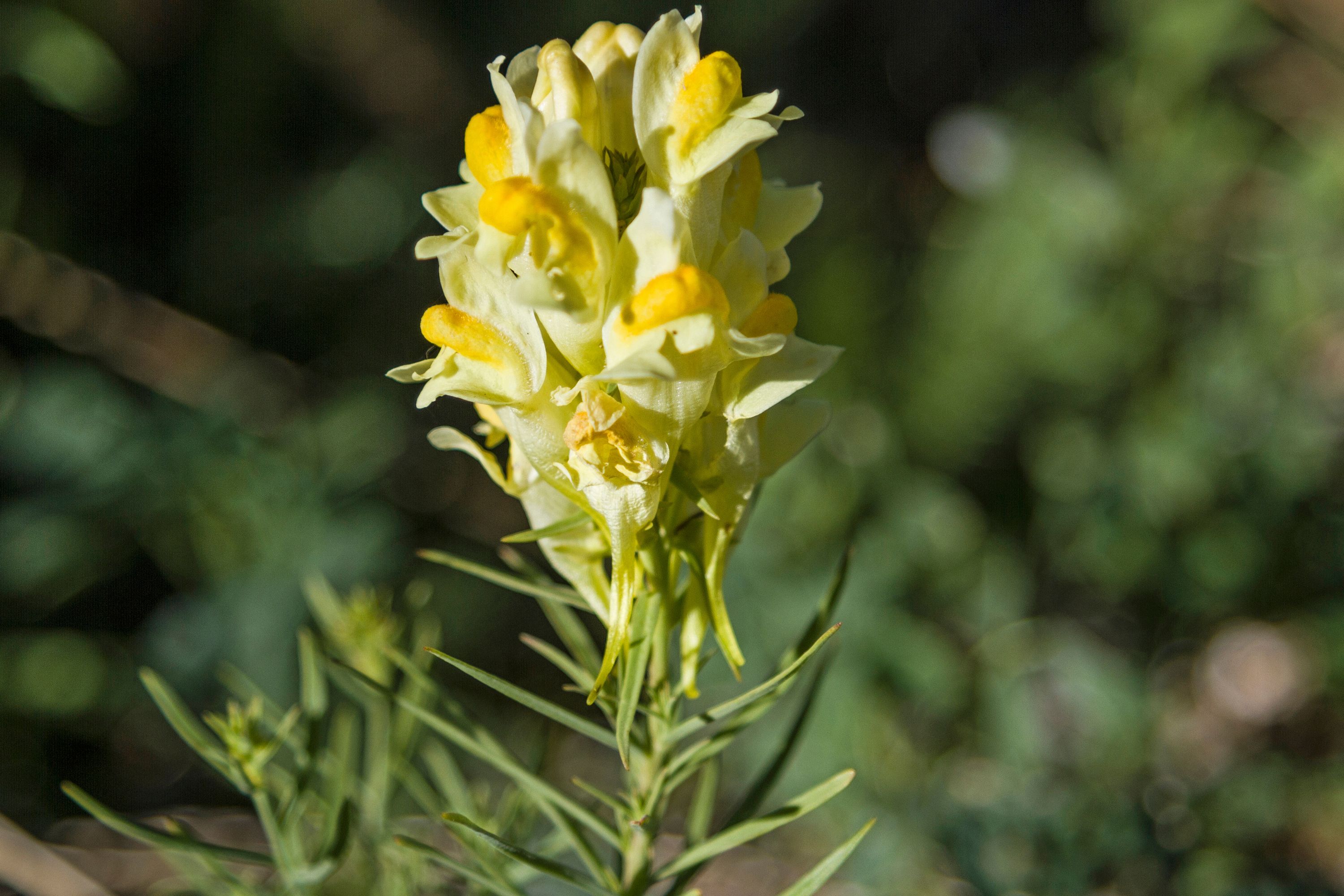Common toadflax
(Linaria vulgaris)

Description
Linaria vulgaris, commonly known as common toadflax, is a herbaceous perennial plant belonging to the plantain family (Plantaginaceae). It is native to Europe and Asia but has been introduced to other parts of the world, including North America, Australia, and New Zealand. In this article, we will explore the characteristics, habitat, and uses of Linaria vulgaris. Classification and Description Linaria vulgaris belongs to the kingdom Plantae, phylum Tracheophyta, class Magnoliopsida, order Lamiales, family Plantaginaceae, genus Linaria, and species L. vulgaris. It is a short-lived perennial herb that grows to a height of 30 to 90 cm. It has an erect stem with numerous branches, and its leaves are linear, narrow, and pointed. The flowers are two-lipped and are borne in terminal racemes. The upper lip of the flower is two-lobed and purple, while the lower lip is three-lobed and yellow. The fruit is a capsule containing numerous small seeds. Habitat and Distribution Linaria vulgaris is a highly adaptable plant that can grow in a wide range of habitats, including grasslands, roadsides, railway lines, waste ground, and disturbed areas. It prefers well-drained soils and is tolerant of drought, heat, and cold. It can grow in both full sun and partial shade. The plant is native to Europe and Asia and has been introduced to other parts of the world, including North America, Australia, and New Zealand. It is considered an invasive species in some regions, such as North America, where it can outcompete native vegetation. Uses Linaria vulgaris has a long history of medicinal use in traditional medicine. The plant contains several bioactive compounds, including alkaloids, flavonoids, and glycosides, that have been shown to have antimicrobial, anti-inflammatory, and antioxidant properties. In traditional medicine, it has been used to treat a variety of conditions, including respiratory infections, gastrointestinal disorders, and skin conditions. However, the efficacy and safety of the plant have not been extensively studied, and its use should be approached with caution. The plant is also valued for its ornamental qualities and is sometimes cultivated in gardens. It is easy to grow from seed and can be grown in a wide range of soils and conditions. It is also an attractive plant for pollinators, such as bees and butterflies, and can help support biodiversity in urban areas. Conclusion Linaria vulgaris, or common toadflax, is a highly adaptable herbaceous perennial plant that is native to Europe and Asia but has been introduced to other parts of the world. It is a valuable plant for its medicinal and ornamental properties and can help support biodiversity in urban areas. However, it is also considered an invasive species in some regions, and its use should be approached with caution.
Taxonomic tree:







